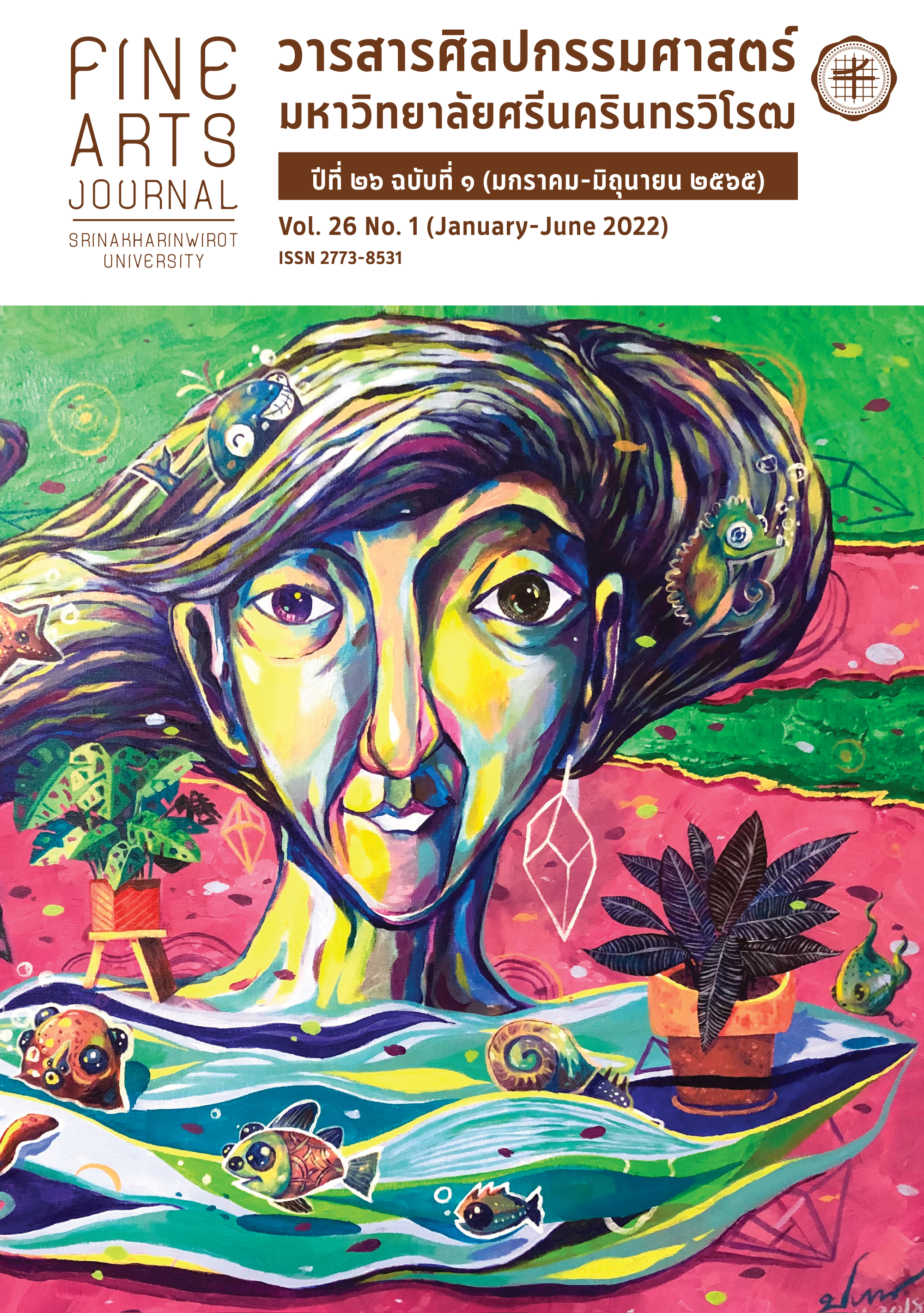UTOPIA IN RADICAL ARCHITECTURE
Keywords:
Utopia, Equality, Architecture, Radical architectureAbstract
The social and cultural changes in the Western World in the 1960s together with a large-scale deterioration of social conditions from the post-war period had led to economic, social, and political inequality problems as well as difficult living conditions. Consequently, people called for equal rights according to the concept of Post-Modernism. The Avant-Garde, who was regarded as a thought leader, presented a ‘Utopia’ concept in architectural theory called Radical Architecture to create an imagery of Utopian urban society where there were full of stunning physical architectural elements with hidden meaning of the philosophy of social norms in various dimensions. The fundamental rights of human and citizenship were also deliberately mentioned in the architectural work.
This article discusses the concept of an important architectural work in Western society during 1960s - 1980s concerning an ideal urbanism philosophy with linkage to the concept of philosophers in the past, along with the criticism of outstanding characteristics. The information is compiled and presented in a form of descriptive writing.
Downloads
References
คมกฤช ธนะเพทย์. (2553). จากบาเบลสู่ยูโทเปียสมัยใหม่. วารสารวิชาการสถาปัตยกรรมศาสตร์ จุฬาลงกรณ์มหาวิทยาลัย, 59(1), 39-54.
คมกฤช ธนะเพทย์. (2554). ยูโทเปียสมัยใหม่ (กว่า): ปฏิสันถารแห่งสถาปัตยกรรมและวิถีเมือง. วารสารวิชาการสถาปัตยกรรมศาสตร์ จุฬาลงกรณ์มหาวิทยาลัย, 60(1), 33-50.
ทักษิณา พิพิธกุล. (2558). จากสมัยใหม่ (Modernism) สู่หลังสมัยใหม่ (Postmodernism): กับการเคลื่อนไหทางวัฒนธรรมสู่ศิลปะกับธรรมชาติ. วารสารวิชาการมนุษยศาสตร์และสังคมศาสตร์. มหาวิทยาลัยบูรพา. 23(43), 147-168.
สันติรักษ์ ประเสริฐสุข. (2560). สถาปัตยกรรมและวิทยาศาสตร์: ภาพสะท้อนของธรรมชาติและจักรวาล. กรุงเทพมหานคร: ลายเส้น.
อัจฉรา ชลายนนาวิน. (2559). ยูโทเปีย: มิติสังคมศาสตร์. วารสารด้านการบริหารรัฐกิจและการเมือง คณะรัฐศาสตร์และนิติศาสตร์ มหาวิทยาลัยบูรพา, 5(2), 1-28.
ฮาร์มัน, คริส (2557). ประวัติศาสตร์โลกฉบับประชาชน: จากยุคหินถึงสหัสวรรษใหม่. (อรวรรณ คูหเจริญ, ผู้แปล). กรุงเทพมหานคร: คบไฟ. (ต้นฉบับพิมพ์เมื่อ พ.ศ. 2542).
Aureli, P. (2011). The possibility of an absolute architecture. Cambridge. MIT Press.
Baker, F. (1993). The Berlin wall: Production, preservation and consumption of a 20th century monument. Antiquity, 67(257), 709-733. doi:10.1017/S0003598X00063742
Branzi, A., & Cattaneo, C.E. (2019). Andrea Branzi: The project in the edge of relativity. New York: Actar.
Damani, A. (2019). Superstudio: Architecture and life (English edition). Orleans.Lieart/Frac Centre-Val de Loire.
De Nies, J. (2014). Super-koolhass a research on how the works of Superstudio and Archizoom influenced the Exodus project of Rem Koolhaas. Retrieved August 10, 2020, from https://www.academia.edu/24941287/Super_Koolhaas
Kiib, H. (2013). Instant city design. Retrieved August 10, 2020 from
https://vbn.aau.dk/ws/portalfiles/portal/76587608/Instant_City_Design_Small.pdf
Sadler, S. (2005). Archigram: Architecture without architecture. Cambridge: MIT press.
Varnelis, K. (n.d.). Programing after program: Archizoom’s No-Stop City. Retrieved August 10 2020 from https://www.academia.edu/6974408/Programming_After_ Program_Archizooms_No_Stop_City.
Downloads
Published
How to Cite
Issue
Section
License

This work is licensed under a Creative Commons Attribution-NonCommercial-NoDerivatives 4.0 International License.






